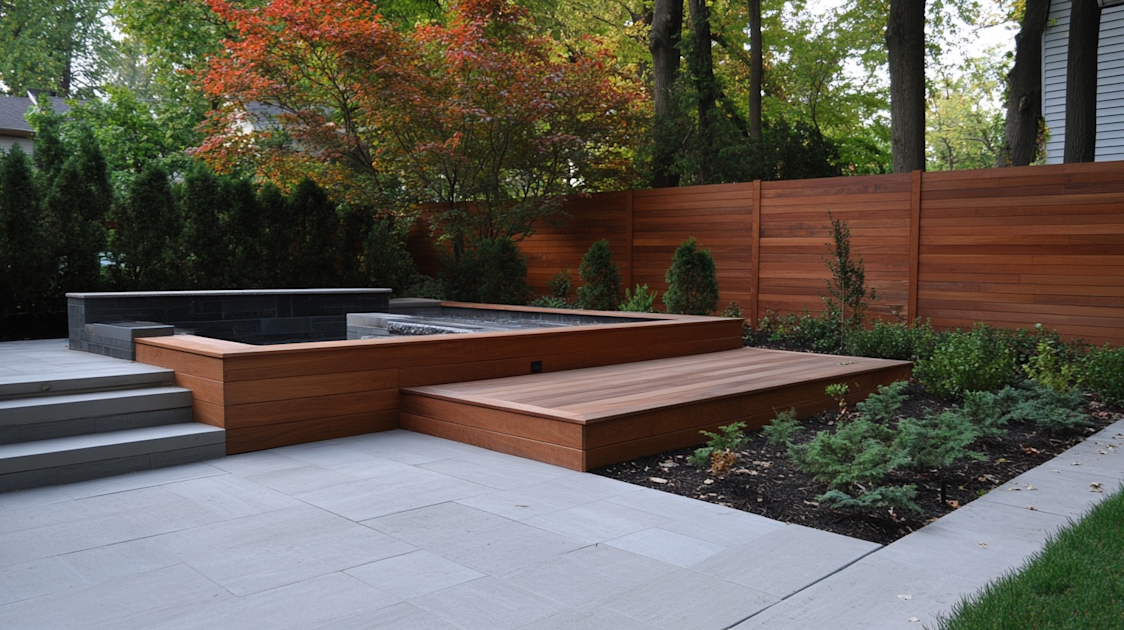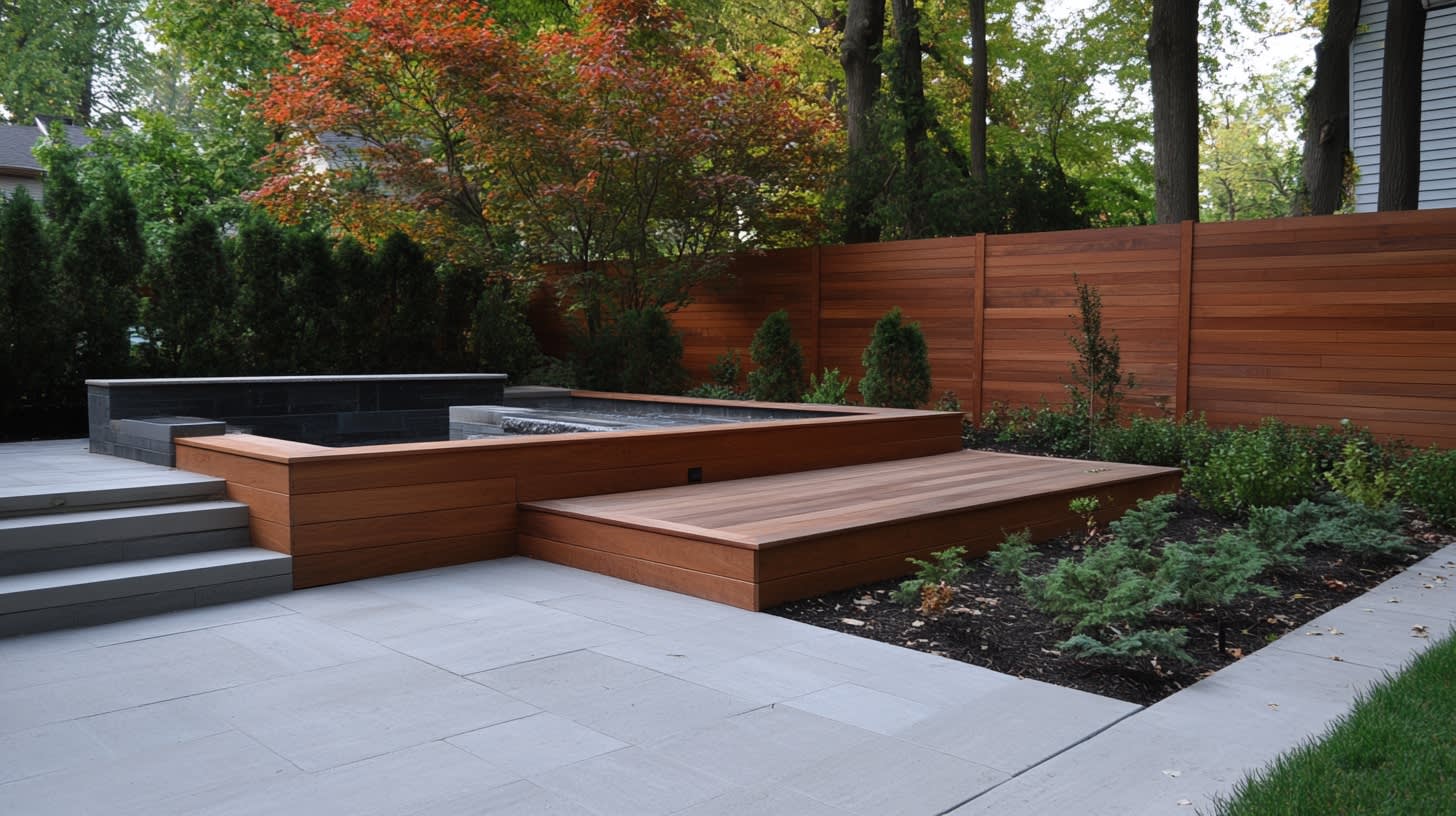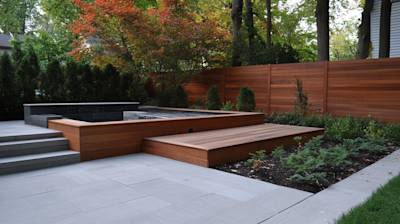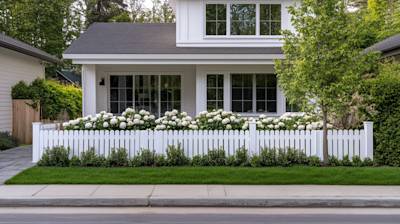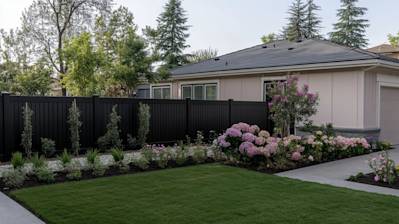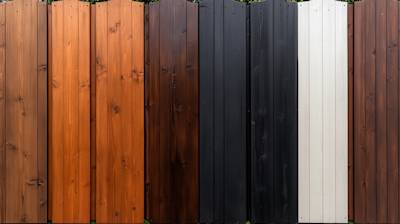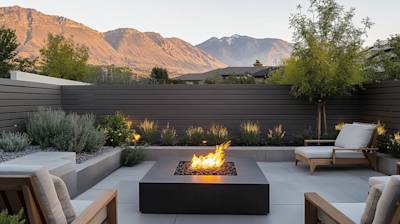Establishing boundaries is an essential responsibility of any homeowner. Whether you want privacy, security, or aesthetic enhancements, cedar fence boards are an all-encompassing solution. Cedar fencing has stood the test of time, and its popularity has surged due to its unrivalled charm, strength, and organic appeal.
This blog post dives deep into understanding the basics of cedar fence boards, their benefits, and crucial tips on installing and maintaining cedar fences for years.
Understanding Cedar Fence Boards
Contrary to some assumption, cedar fence boards aren't all alike. They differ in quality, finishing, type, and cost. Let's shed light on some significant aspects you should know about cedar fencing.
Types of Cedar Fencing
There are mainly three types of cedar you should consider for fencing:
- Western Red Cedar: Known for its incredible durability and resistance against decay and insect damage, it's a top choice for fence boards.
- Northern White Cedar: It's lighter and less dense than the Western Red Cedar, but offers excellent resistance against decay and pests.
- Eastern Red Cedar: Though not as popular as the others, it's preferred by some due to its unique colors, ranging from purple to yellow.
Quality Factors
The quality of cedar fence boards lies primarily on:
- Grade: The grading system applies to fencing lumber, where the higher the grade, the better the quality.
- Texture: Cedar fence boards come as rough or smooth. Rough boards provide a rustic, natural look, while smooth boards give a more refined appearance.
Key Benefits of Cedar Fencing
Appeal and durability aside, cedar fencing brings a bounty of benefits, making them a popular choice for many homeowners.
- Weather-Resistance: Cedar possesses natural oils that protect it from absorbing water and therefore, resist warping and shrinking.
- Pest-Resistance: The same oils also deter pests, especially termites, which are a menace to wooden fences.
- Eco-friendly: Cedar’s natural qualities mean it requires less chemical treatment compared to other wood types, making it an environmentally-friendly choice.
Installing Cedar Fence Boards
Fencing installation can make or break your landscaping. Even the highest quality cedar fence boards won't serve their purpose if not installed properly. Here are essential steps to installing cedar fences:
- Plan: Measure and mark where you want your fence to be. Sketch it out to visualize better.
- Dig Post Holes: Depending on the height of your fence, dig post holes about 2 feet deep, and spaced appropriately.
- Set Posts: Use concrete to set the cedar fence posts in the holes. Ensure they are level.
- Install Rails: Once the posts are set, attach the cedar rails using screws or nails.
- Attach Boards: Start attaching the cedar fence boards on the rails from one end, ensuring even spacing between them.
Maintenance of Cedar Fences
To maximize the life expectancy of cedar fence boards, it's essential to maintain them properly. Here are some general maintenance tips.
Sealing: To preserve the natural color of cedar and protect it against the weather, consider applying a good quality sealant.
Cleaning: Occasional cleaning using warm soapy water will keep your cedar fence free from dust and mildew.
Repair/Replace: Regularly inspect your cedar fence for any signs of damage or wear. Early repairs can prevent extensive damage.
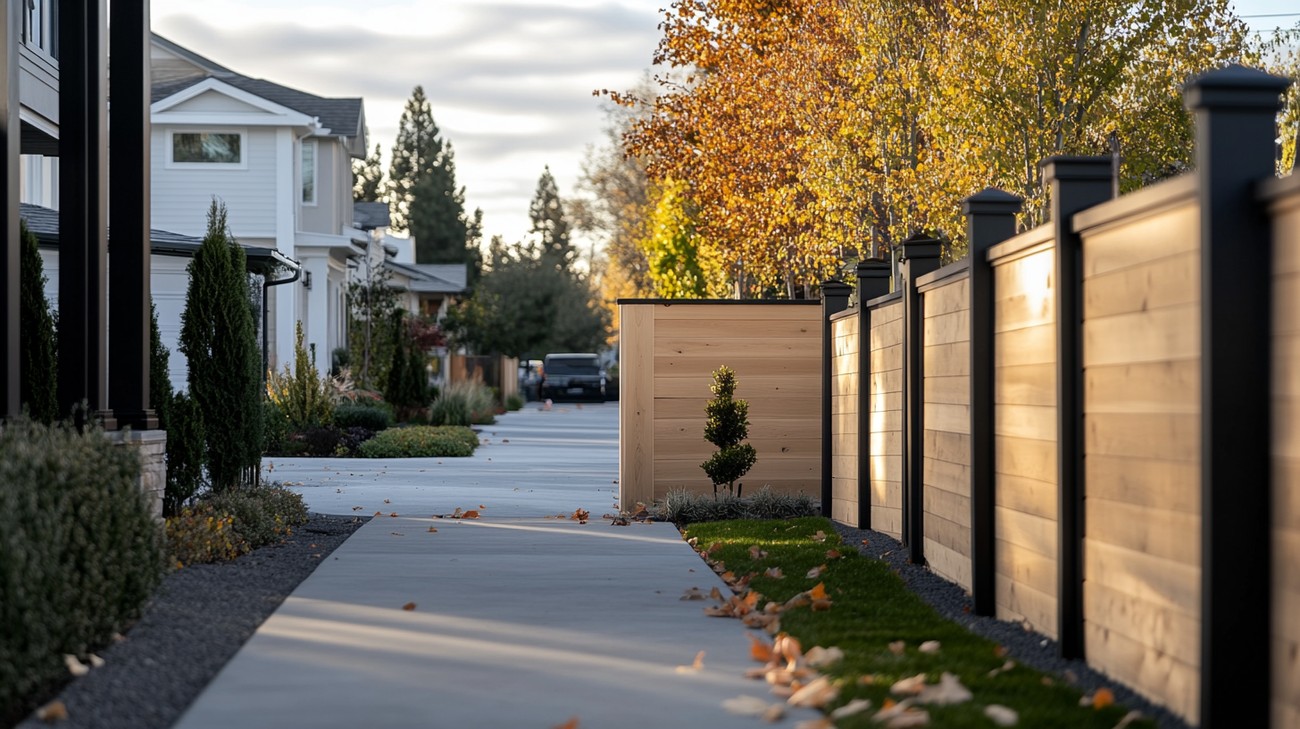
Frequently Asked Questions about Cedar Fence Boards
What is the lifespan of cedar fence boards?
The lifespan of cedar fence boards depends on a number of factors such as the climate, maintenance, and quality of the installation. On average, though, you can expect a cedar fence to last around 15 to 30 years. The longevity can be extended through regular maintenance, which includes cleaning, staining or sealing the boards.
How should I maintain my cedar fence boards to keep them in good condition?
Cedar fence boards are relatively low-maintenance. However, to maintain their appearance and longevity, some basic care is needed. Use a power washer or a scrub brush and soapy water to clean dirt and mildew off the surface. This should be done annually or as needed. Additionally, it's worthwhile to seal or stain the cedar fence boards every three to five years to protect them from weathering and UV damage.
Are cedar fence boards eco-friendly?
Yes, cedar fence boards are considered a highly sustainable and eco-friendly fencing option. Cedar trees grow relatively fast and are widely available and easy to replace, making cedar a renewable resource. Plus, the natural resilience of cedar wood means less need for chemical treatments, which adds to its green credibility.
Can I paint my cedar fence boards?
Absolutely! Cedar fence boards can be painted to fit any color scheme you desire, but remember that painting will require more maintenance in the future as it can chip and peel over time. If you wish to retain the natural grain and color of cedar, you might want to consider using a transparent stain or sealant instead.
Do cedar fence boards warp over time?
While cedar wood is more resistant to warping than some other wood types, it's still not completely immune. Moisture and humidity changes can cause cedar fence boards to warp or twist over time, but the degree to which this occurs can be minimized with proper installation and maintenance.
How much does it typically cost to install a fence with cedar fence boards?
The cost of installing a fence with cedar fence boards can vary significantly based on factors such as the height and length of the fence, the quality of the cedar boards, and the cost of labor in your area. On average, you can expect to pay between $15 and $30 per linear foot for a cedar fence.
Are cedar fence boards resistant to insects?
Indeed, they are! One of the many benefits of choosing cedar fence boards is their natural resistance to insects. The aromatic oils present in the wood serve as a natural deterrent to a variety of insects, reducing the need for additional chemical treatments.
Can I use cedar fence boards for indoor projects?
Sure, cedar fence boards are not only for fences. Owing to their unique color and grain, these boards are often used for indoor projects such as wall paneling, furniture, and shelving. However, it's crucial to ensure that the boards are properly dried before using indoors, to prevent them from warping or shrinking.
Should I seal my cedar fence boards?
Sealing your cedar fence boards isn't requisite, but it can go a long way in enhancing their longevity. A quality sealant can protect the boards from UV rays and weathering, helping to maintain the fence's color and structural integrity for years to come.
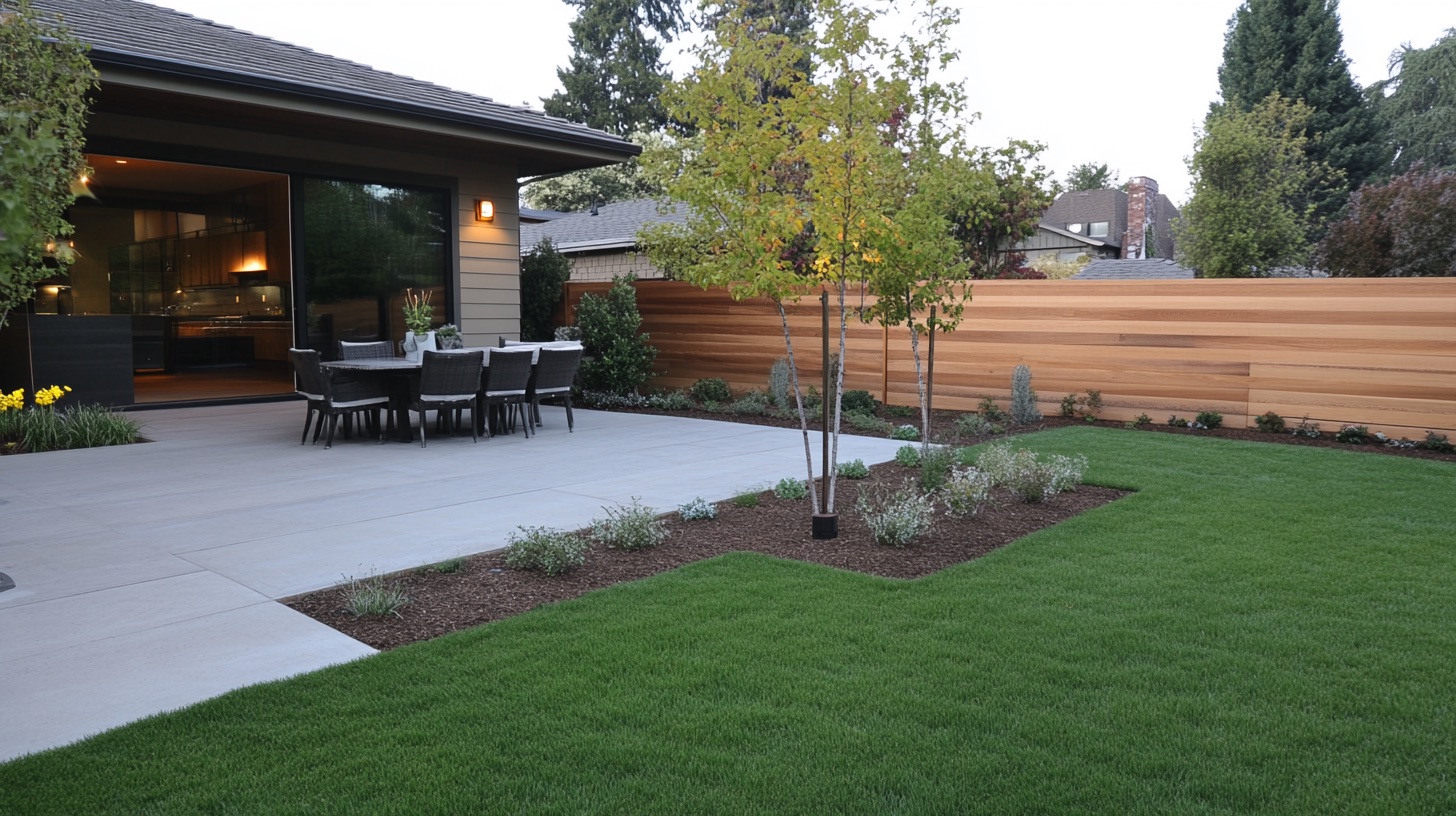
Pros of Cedar Fence Boards
Long Lifespan
Cedar wood is hailed for its exceptionally long lifespan. This is particularly true when it comes to cedar fence boards. When properly maintained, a cedar fence can stand strong for anywhere between 15 and 30 years. To put things into perspective, this is much longer than the average lifespan of other commonly used fencing materials such as pine or spruce that typically last between five and twelve years.
Natural Resistance to Pest and Decay
Cedar wood possesses a natural resistance to rot, decay and pest infestation. This is due to oils and acids in the cedar that deter insects, funguses and other harmful organisms. This natural resistance means cedar fences don't require regular application of pest control solutions or fungicides, drastically reducing maintenance efforts and repeated costs in the long run.
No Need for Chemical Treatments
Unlike other wooden materials, cedar doesn't need chemical treatments to enhance its durability or resistances. This makes cedar fence boards a safer and more environmental-friendly option. Plus, you can rest assured knowing that your cedar fence isn't leaching any potentially harmful chemicals into your yard.
Aesthetically Pleasing
Cedar wood is widely appreciated for its rich texture, warm color and attractive grain patterns. A cedar fence adds a touch of natural elegance and rustic charm to any property. Plus, with time, cedar wood weathers to a beautiful silver-grey shade that many homeowners find appealing.
Insulating Properties
Cedar has superior insulating properties, which means that a cedar fence can effectively block out cold winds in the winter and keep your yard cooler in the summer.
Cons of Cedar Fence Boards
Higher Initial Costs
One of the main drawbacks of cedar fence boards is their higher initial cost compared to other materials like pine or vinyl. While the long-term benefits can make cedar a cost-effective option in the long run, you'll need to be prepared for a bigger price tag upfront.
Prone to Weathering and Color Fading
While many homeowners appreciate the silver-grey patina that cedar wood develops over time, others may be disappointed to find that the rich, warm color of their new cedar fence doesn't last forever. If you prefer to maintain the original color of cedar, you'll need to regularly seal and stain your fence, which can add to the maintenance efforts and costs.
Availability and Sustainability Concerns
Cedar wood is not as readily available as other types of wood, especially in regions where it doesn't naturally grow. This can sometimes result in higher costs and potential delays in sourcing the material for your fence. There are also sustainability concerns with cedar since it takes a long time for the trees to mature and make the harvesting process environmentally friendly.
Requires Periodic Maintenance
Despite its natural resistance, a cedar fence still requires some level of maintenance to keep it looking its best and extend its lifespan. This can include periodic cleaning, staining, sealing and replacing damaged boards. Neglecting these tasks can result in premature aging and potential damage to your cedar fence.
Vulnerability to Certain Types of Damage
Cedar fences can be prone to certain types of damage. While they resist pests and decay, they can still be susceptible to wind damage, splitting, and warping. It’s especially important to treat cedar fences with a water-repellent sealant to prevent this kind of damage.
Limited Width of Boards
Cedar fence boards are generally available in limited widths, usually not exceeding eight inches. This can limit design options, especially for those who prefer wider boards for a particular aesthetic. It also means you may need more cedar boards to cover the same area than if you used wider boards of another type of wood.
Myths and Misconceptions About Cedar Fence Boards
One of the commonly utilized materials for home fencing is cedar. Cedar fence boards offer a unique blend of aesthetics, durability, and natural resistance to insects and decay. However, plenty of myths and misconceptions surround this beloved building material. Let's dive into them.
Myth 1: All Cedar is the Same
Reality
There is a common misconception that all cedar is the same. However, it's crucial to understand that there are multiple types of cedar, each with its distinct characteristics. Eastern Red Cedar, Western Red Cedar, and Yellow Cedar are some popular varieties. Western Red Cedar is typically top choice for fencing because of its rich color, texture, durability and natural resistance to insects.
Myth 2: Cedar Fence Boards Don't Require Maintenance
Reality
While it's true cedar boasts a natural resistance to rot and insects, leading many to believe it's maintenance-free, this unfortunately isn't entirely true. Proper maintenance is still important to preserve the board's color and enhance longevity. This can include applying a sealant or a stain, which not only strengthens the board's resistance to weather but also helps maintain cedar's iconic reddish hue.
Myth 3: Cedar Fence Boards are Always Expensive
Reality
Many believe that cedar fence boards are costly due to their high quality and longevity. While cedar can be more expensive than some other types of wood, its price varies based on factors such as the type of cedar, the board's size, and the region where it's sold. Also, considering its longevity and little to no need for replacement, cedar often provides more value for your money in the long run.
Myth 4: Cedar Fences Attract Termites
Reality
A common misconception is that, like many wood products, cedar fences attract termites. Cedar, however, is naturally resistant to termites and other insects. Its natural oils act as a deterrent for these pests. While cedar won't make your property immune to termites, it doesn't actively attract them either.
Myth 5: Cedar Fence Boards Warp Easily
Reality
Many people believe cedar fence boards warp easily under heat and moisture exposure. While warping can occur in any wood under certain conditions, cedar is actually less susceptible to warping compared to other types of wood. This is because cedar is a low-density wood that doesn't absorb water as easily, reducing the risk of warping.
Myth 6: Cutting Cedar Fence Boards Harms the Environment
Reality
Another common myth is that using cedar fence boards adversely impacts the environment since it involves cutting down cedar trees. It's important to note, however, that many cedar forestry operations practice sustainable harvesting. This means they replant more trees than they cut down, which not only maintains the population of cedar trees but helps to sequester carbon as well.
Myth 7: Cedar Fences are Difficult to Install
Reality
Many people believe that cedar fences require professional installation because they are more difficult to install than other types. This is not necessarily true. Cedar can be just as easy, if not easier to install than other materials, with pre-cut, flat-topped, or dog-eared boards available for easy installation.
Understanding these myths and misconceptions about cedar fence boards can help you make more informed decisions when choosing your fencing material. These debunked myths show that cedar isn't just a pretty face, but a durable, sustainable, and practical choice for your fencing needs.
Summary
Cedar fence boards are an excellent choice for those who prioritize aesthetics, durability, and bug resistance in their fencing options. Their rich, warm color, natural oils, and aromatic scent not only up the ante of any outdoor area but also make for a fence that's long-lasting. With proper maintenance, cedar can withstand many years of exposure to both weather and pesky insects, proving its worth and value as a worthy investment for homeowners seeking to enhance their curb appeal.
Another great aspect of cedar fence boards is their versatility. Whether you're looking to create a classic picket fence, a rustic rail fence, or a sturdy privacy fence, cedar makes it possible. Its grain pattern allows it to be easily shaped and cut into various styles, allowing you to design a fence that's not just functional, but also reflective of your personal taste. And, if you ever decide to change its look, cedar takes well to paint and stains, offering an easy update.
Wrapping it up, cedar fence boards offer a unique blend of beauty, durability, and flexibility that few other fencing materials can match. They might seem like a bit of a splurge upfront, but anyone who's had a cedar fence would agree that it pays off in the long run, all while adding a touch of natural charm to your home. So, if you've got fencing in your plans, cedar fence boards should definitely be on your consideration list.
About Ornamental Solutions
Ornamental Solutions is a Sacramento, CA-based company that brings beauty and elegance to every space. We've been around for over 20 years, honing our craft and developing a keen eye for detail. We're much more than just a decor shop: we're style architects, who blend functionality, charm and a bit of California cool to transform locations into visually captivating spaces. Whether it's a home, an office, or a commercial site, our expert team will work their magic, leaving your space more alluring than ever. At Ornamental Solutions, we believe in enhancing spaces to reflect exceptionally charming aesthetics - a principle you'll notice in every project we touch.

